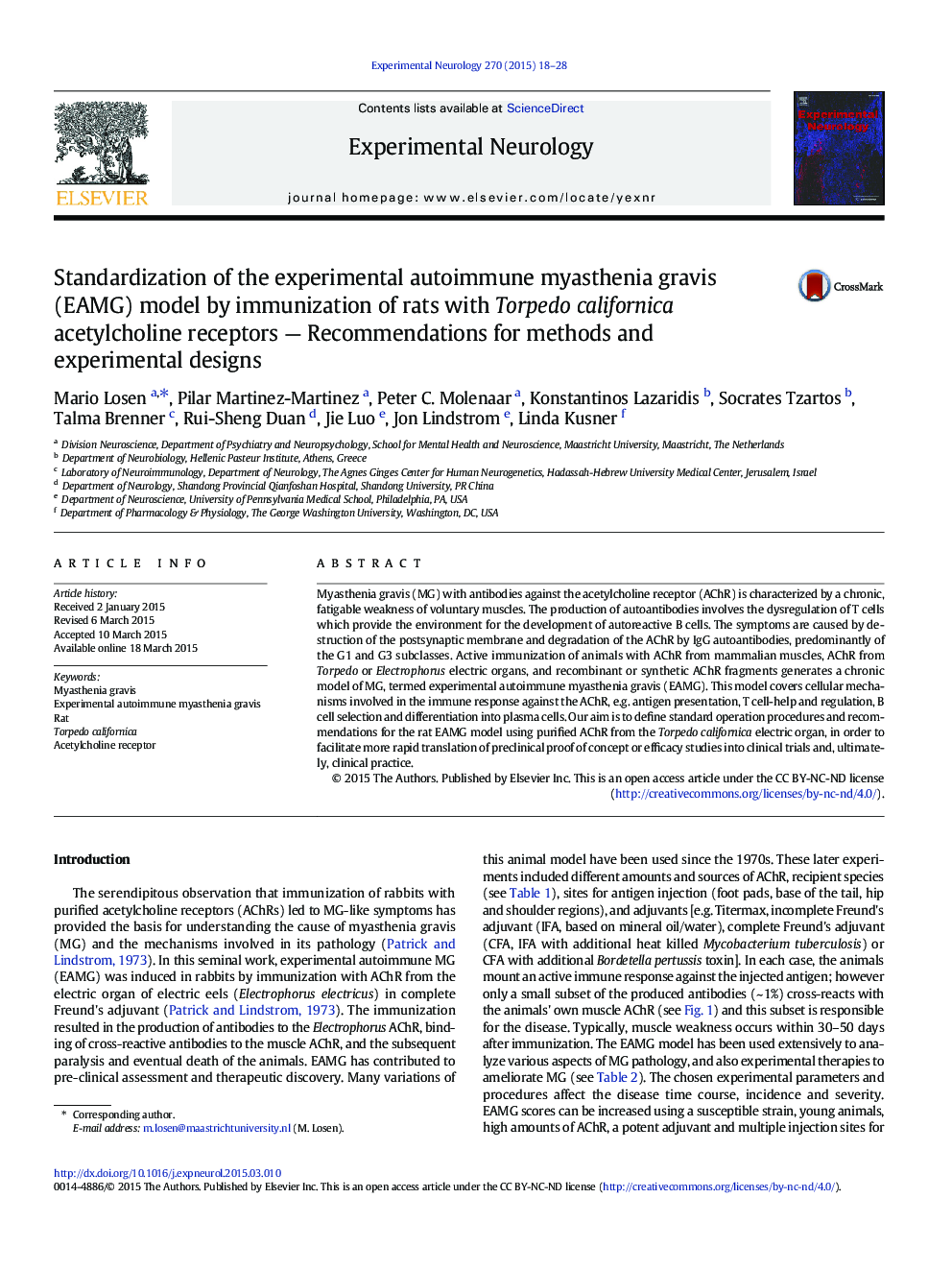| Article ID | Journal | Published Year | Pages | File Type |
|---|---|---|---|---|
| 6017410 | Experimental Neurology | 2015 | 11 Pages |
Abstract
Myasthenia gravis (MG) with antibodies against the acetylcholine receptor (AChR) is characterized by a chronic, fatigable weakness of voluntary muscles. The production of autoantibodies involves the dysregulation of T cells which provide the environment for the development of autoreactive B cells. The symptoms are caused by destruction of the postsynaptic membrane and degradation of the AChR by IgG autoantibodies, predominantly of the G1 and G3 subclasses. Active immunization of animals with AChR from mammalian muscles, AChR from Torpedo or Electrophorus electric organs, and recombinant or synthetic AChR fragments generates a chronic model of MG, termed experimental autoimmune myasthenia gravis (EAMG). This model covers cellular mechanisms involved in the immune response against the AChR, e.g. antigen presentation, T cell-help and regulation, B cell selection and differentiation into plasma cells. Our aim is to define standard operation procedures and recommendations for the rat EAMG model using purified AChR from the Torpedo californica electric organ, in order to facilitate more rapid translation of preclinical proof of concept or efficacy studies into clinical trials and, ultimately, clinical practice.
Keywords
Related Topics
Life Sciences
Neuroscience
Neurology
Authors
Mario Losen, Pilar Martinez-Martinez, Peter C. Molenaar, Konstantinos Lazaridis, Socrates Tzartos, Talma Brenner, Rui-Sheng Duan, Jie Luo, Jon Lindstrom, Linda Kusner,
